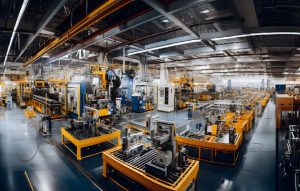Information technology is revolutionizing everything — yes everything — around us. From enterprise-level businesses to our day-to-day life, processes have become simple, connected and instant. Mobile devices and ubiquitous connectivity have unleashed a new era of responsiveness and competition.
Smart connected devices offer exponentially expanding opportunities for greater reliability with new functionalities, much higher productivity and real-time responses with competitive advancement. The quickly changing technology is disrupting the value chain and forcing enterprises to rethink, retool and recreate everything they do from manufacturing to marketing.
“By 2020, there will be 30B devices connected to the Internet.”
Smart devices, when connected with sensors and the Internet, produce data. This data, which is used to get information and insights for exponential growth, is known as the Internet of Things (IoT).
What Are Smart, Connected Things?
Smart, connected things have three core elements:
1. Physical components
2. Smart components
3. Connectivity components
Smart components amplify the capabilities and value of the physical components, whereas connectivity amplifies the value and capabilities of the smart components. This ultimately results in a cycle of value improvement. The entire system is known as the smart, connected things.
Capabilities of Smart Connected Things
Connected ecosystems enable the capabilities of smart, connected things in the following way:
Monitor: Sensors with connected devices produce data, which enables the comprehensive monitoring of the product’s condition, external environment and operation to generate notifications and actionable intelligence.
Control: They make it possible to operate and control connected products remotely with personalization. One can create users, rules and logic into the products/things to enable complete control and personalization.
Optimize: The capacity to control and monitor the rich flow of information allows businesses to enhance performance.
Automate: Applying software algorithms and business logic to the collected data about business, products and user preferences enables the product to perform autonomously.
IoT Transforming our Lifestyle
Beacons and sensors, when connected with the Internet, leverage essential data for quick decision and process implementation on a mobile mode. This data transforms our decision-making process by providing smart intelligence tips and tools.
For example, beacons and other sensors compiled in a system that is connected with the Internet are useful in smart traffic management, smart homes, smart buildings, etc. One can save huge on energy consumption, space management and predictive maintenance costs with these technological advancements. Also, you will get timely solutions without external inputs and resources. It’s all in the embedded smart systems designed for running future smart homes and smart buildings smoothly.
There are plenty of examples of enterprises developing smart systems and products to leverage easy, efficient and smart lifestyle by implementing IoT with connected networks and sensor devices. For example, a Tesla vehicle in need of repairs can autonomously call for a corrective software download, or, if necessary, send a notification to the customer with an invitation for a valet to pick up the car and deliver it to a Tesla facility. Similarly, Google autonomous cars are successfully getting over the experimental mode. Imagine when both Google and Tesla will release their cars to the consumers.
Another example is Philip Lighting. Users can control Philips Lighting Hue light bulbs via smartphone, turning them on and off, programming them to blink if they detect an intruder or dimming them slowly at night.
With Sonos, the company’s wireless music systems place the user interface in the cloud, enabling users to control the portable device from a smartphone.
Ralph Lauren’s Polo Tech Shirt, available in 2015, is another example. It streams distance covered, calories burned, movement intensity, heart rate and other data to the wearer’s mobile device.
In health care industry, physicians and doctors are using new wireless technologies to monitor patients remotely in order to detect their health issues early for a timely solution. Internet-connected devices and the influx of data is a valuable source for health systems. The analytics empower the health care industry to optimize it fully in order to provide better care, reduce inefficiencies and cut down costs.
In a nutshell, we can summarize that the things and products are capable of self-operating, updating, learning and correcting by analyzing real-time data. Things can be serviced, enhanced and updated instantly from anywhere.
Machines & Manufacturing
Industry 4.0 is revolutionizing businesses quickly with M2M communication where humans do not need to communicate with the machines. Machines are communicating and collecting data on their own and sending it to the central system where businesses can use the data for better insights. Internet of Things, sensors, connected devices, cloud and people are completely transforming manufacturing, retailing, supply-chain, marketing and ultimately the entire business and processes.
How a World of Smart, Connected Things is Transforming Manufacturers
Personalize/ Customize: Things and products can be customized to any extent before or after they are sold. It means you will get what you desire, and even after purchasing a product or thing, you can customize it as per your specific need or purpose.
Operation/Condition Monitoring: Things or products can assess their own condition, performance and operator’s status and inputs.
Remote Control: Things and products have become smart enough and you can operate them remotely in real-time. It means you don’t need to be present everywhere and you can operate them sitting on your couch in front of the dashboard.
Upgrade/Service: Products and things can be upgraded, serviced and enhanced instantly from anywhere. Get all the maintenance statistics in advance and enhance systems before it breaks with predictive intelligence.
Autonomous: Products and things are capable of self-operating, updating, learning and correcting by analyzing real-time data.
Impact of Connected Things on Manufacturers
Internet, connected devices, cloud and big data creating a big impact on manufacturers. Nowadays, with the advanced technology, the value is shifting from hardware to software, product to cloud and product to service. It means products are not restricted, they have transformed dynamically and they can leverage service efficiently. Manufacturing has tremendously transformed how products are created and serviced.
Digitization, globalization, regulation, personalization, software-intensive products, service and connectivity are the seven basic forces of this industrial transformation.
Originally Featured on Manufacturing.net








